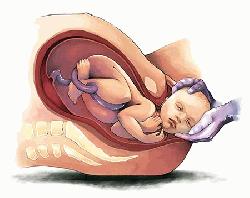Gestational diabetes mellitus (GDM) is defined as glucose intolerance of various degrees that is first detected during pregnancy.It means you have high blood sugar levels, but those levels were normal before you were pregnant. Approximately 7 per cent of all pregnancies are complicated by GDM, resulting in more than 200,000 cases annually.
Generally in this stage, during pregnancy, the placenta makes hormones that can lead to a buildup of glucose in your blood. Usually, your pancreas can make enough insulin to handle that. If not, your blood sugar levels will rise and can cause gestational diabetes.
So, when do you know that you are in risk of having a diabetic condition when you are pregnant?
The answer may include overweight (extra weight makes it harder for your body to use insulin), family history (you have a parent, brother, or sister with type 2 diabetes), women who are older than 25 years, women who are black, American Indian or Asian are at higher risk to develop gestational diabetes, your blood sugar levels are high, but not high enough for you to be diagnosed with diabetes; this is called prediabetes.
To check the diabetic condition, tests for gestational diabetes are usually done around 24 to 28 weeks of pregnancy. Women may first undergo a glucose screening test, in which they drink a sugar solution, and their blood sugar level is tested one hour later. If a woman’s blood sugar level is higher than normal, they may need to undergo a second test, called a glucose tolerance test, according to National Institutes of Health (NIH).
During this period, the main problem that can affect the baby is Macrosomia (excessive birth weight of baby).Having a big baby may make labor and birth more difficult. There’s also a higher risk of a big baby getting stuck in the birth canal during delivery (shoulder dystocia). This may cause several internal injuries.
Also, high blood sugar levels during pregnancy and labor increase the risk of a baby developing low blood sugar (hypoglycemia) after delivery. That’s because the baby’s body produces extra insulin in response to the mother’s excess glucose. Insulin lowers the amount of sugar in the blood.
Newborn may face early birth and respiratory distress syndrome,type 2 diabetes later in life, polycythemia etc. also.
Though after the baby is born, gestational diabetes usually goes away; however,eating healthy foods, maintaining diet, exercising before and during pregnancy, lose excess pounds before pregnancy, taking medication like insulin (by Doctor’s recommendation), regular health checkup etc. can reduce the chance of gestational diabetes and miscarriage during the ternet.birth of a child, reports in




